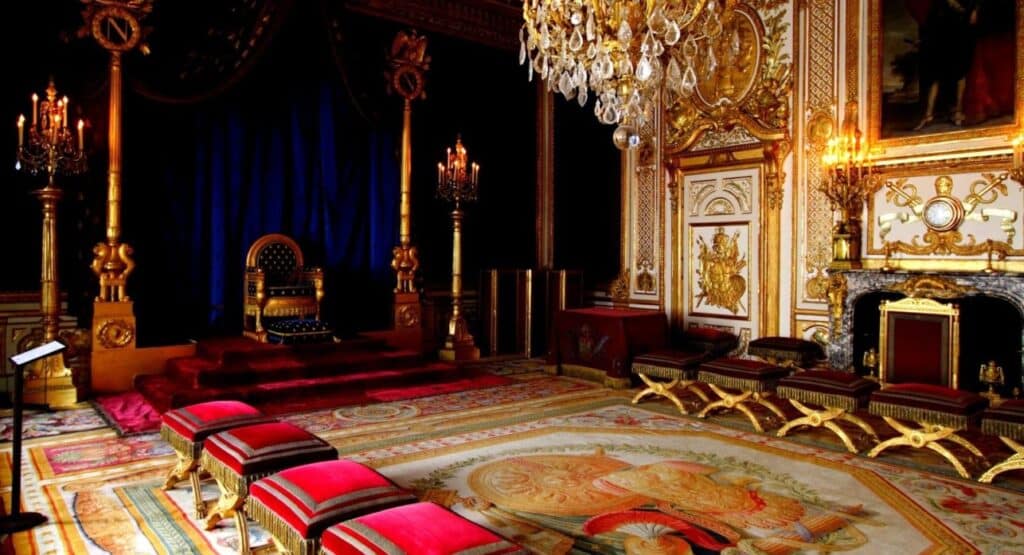by Christos Zambounis
Some 250 years after the French Revolution, 6,500 towers scattered throughout Louis XIV’s country are a reminder of extravagance.
When his mother was cheekily murdered by a psychotic who “heard voices” in the kitchen of the family tower, her eldest son, Ghislain de Castelbajac, decided to leave Paris and his lucrative job in the wine trade to settle in the land of his ancestors. And what ancestors! From the 14th century when they acquired a title of nobility, the Castelbajac’s served the kings of France in every way, with one of them being linked by close friendship to Henry IV. Modern visitors are able to admire the four-poster bed where the French anaxe was laid to rest in the Château de Caumont – this is the name of the Tower.
In total, 6,500 towers are counted on French soil, with 5,500 of them designated as historical museums. Hm, the designation is a “poisonous gift” if one takes into account the obligation of tower owners to keep the doors of their properties open, to the public. ‘The life of a turret keeper is far from what other people imagine, who have the impression that anyone who owns a château is rich and lives his life by organising parties and hunts,’ explains Louis de Mailly, whose château was sold by his grandfather to pay his brother’s debts incurred as a result of his involvement in gambling. One of the few survivors of the purges of the French Revolution, which brought thousands of his kind to the guillotine, he is proud of his origins and continues to live ‘la vie de Château’, ‘the life of the Tower’, inviting his friends who have painstakingly preserved their properties.

Château Breteuil, owned by Henri Francois de Breteuil, in Choisel, France.
High taxes and, above all, insurmountable maintenance costs have forced several of them to resort to the last resort of selling. This is the case of Count Sixte de La Rochefoucoud, duke of Liancourt. After successive disasters, from the Hundred Years’ War (1337-1453) to the German occupation, the inability to meet tax and other burdens led one of the oldest noble families to sell the Château de Verteuil. Its price is surprising: 2,800,000 euros for a 40-room tower surrounded by a 380-acre estate.
“Around 1,500 to 2,000 towers are on the market today,” comments estate agent Géraldine Meissirel. Of noble birth herself, she has a story to tell about one of her family’s châteaux, which was bombed by the Allies, in Montreuil-sur-Mer, because they had information that Field Marshal Rommel was staying there. “Three years ago,” he continues, “a writer, journalist and television presenter specialising in royal reporting proposed to President Macron the creation of the Loto du patrimoine, a lottery that would allow the Towers to be saved.” The idea is simple. The profits from the lottery would be used to finance projects for the conservation of the chateaux selected. 2,000 applications have been submitted, at the time of writing, with 250 of them getting the green light, and 18 per region receiving a remarkable financial boost.

The baroque Château de Vaux-le-Vicomte, in Maincy.
On 7 October this year, the Château de Caumont, owned by Ghislain de Castelbajac, cousin of the famous fashion designer Jean-Charles de Castelbajac, received a grant of €300,000 from the Regional Governor of Occitanie-Pyrénées. This money will allow, among other things, the renovation of a 200 m² warehouse, which will be used for events such as weddings and business seminars.
The English were the first to lead the way, with the creation of the National Trust, a private fund which, as early as 1895, has enabled hundreds of castles to be saved. In the country of the grey orange, the corresponding châteaux, Tatoi and Mon Repos, were already facing the absolute contempt of the state in 1967, the year of the royal family’s departure from the country after Constantine’s failed counter-movement against the colonels.

In the cellar of Château Lafite-Rothschild.
The current Prime Minister wanted to take a decisive initiative for the promotion of the royal estate of Tatoi, with visible results to date. History cannot be erased or rewritten.












